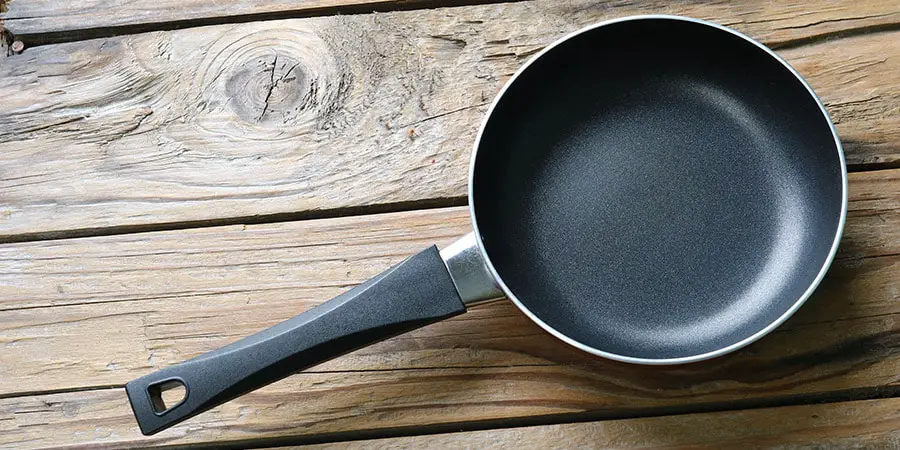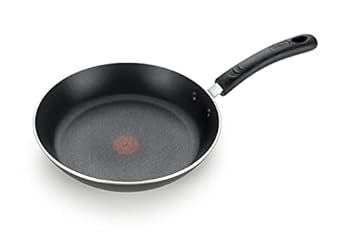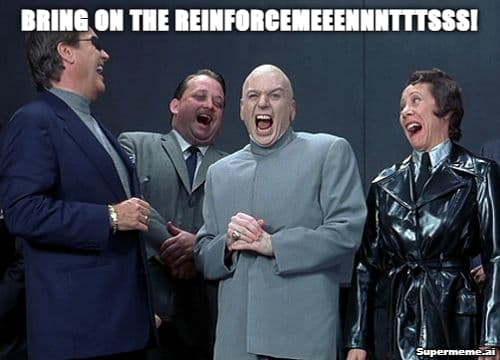• Non-Stick
What do you mean it’s not Teflon??

Reviewed by Trinity Anderson
Last Updated December 2023

A Comprehensive Guide To Non-Stick Cookware

Curious about the type of nonstick coating on your cookware? Teflon, a well-known brand owned by Chemours, has become synonymous with nonstick coatings. However, it's important to note that not all nonstick coatings are Teflon. If you're unsure about the coating on your cookware, this guide will help you determine it.
Typically, nonstick coatings for cookware are either fluoropolymer plastic (PTFE) based or silicone based. PTFE coatings are commonly used on pots and pans, while silicone-based coatings are primarily found on kitchen utensils and bakeware.
In light of recent concerns regarding the safety of PTFE-based nonstick cookware, there has been a rise in the availability of ceramic-based nonstick cookware on the market. These are often referred to as "healthy cookware" because ceramics are free of PTFE and PFOA.
Firstly, what is Teflon, PTFE and PFOA?
Teflon, a well-known brand, is actually a type of plastic called polytetrafluoroethylene (PTFE). While PTFE and Teflon are often used interchangeably, it's important to understand the distinction. Think of it like Kleenex and tissues.
In the past, another chemical called Perfluorooctanoic Acid (PFOA) was used in the production of PTFE. However, it's crucial to note that PFOA is not the same as PTFE.
During the manufacturing process, PFOA is burned off and only trace amounts remain in the final product. Nonetheless, there were concerns about PFOA's long-lasting nature and its negative impact on human health and the environment. It is considered both a pollutant and a toxin.
To address these concerns, the Environmental Protection Agency (EPA) took action. In 2006, they initiated the PFOA Stewardship Program, with the goal of eliminating the use of PFOA by 2015. Eight global companies agreed to this mandate, some opting for alternative chemicals known as GenX chemicals. However, this solution doesn't completely solve the problem. Other companies chose to exit the industry altogether. As a result, since 2015, most reputable non-stick coating manufacturers, including Chemours, the makers of Teflon, produce coatings without PFOA.
Therefore, when you come across cookware advertising as "PFOA-free," it simply means that the PTFE used in the manufacturing process was made without the use of PFOA. However, in light of the EPA's stewardship program, this claim is often seen as nothing more than a marketing tactic.
Why is PTFE non-stick?

PTFE, a waxy solid, is renowned for being the most slippery substance ever found. In fact, it is said to be even more slippery than wet ice!
The reason behind its nonstick properties lies in the chemical structure of PTFE.
To put it simply, there is no adhesive force between the PTFE molecules and any other material it encounters. From a chemical standpoint, PTFE can be considered an 'introvert'. As a result, nothing adheres to its surface, making it ideal for traditional non-stick cookware that effortlessly releases food.
How is PTFE applied to a metallic pan?
Non-stick coatings cannot be directly applied to a metal pan due to their inability to adhere. Therefore, the pan must first undergo a treatment to roughen its surface.
Afterwards, the PTFE is combined with a binder that aids in its adhesion to the surface of the pans.
To achieve an even coating, the nonstick coating is applied to the pan using a 'carrier' (previously known as PFOA). The coating is then subjected to high heat to undergo a curing process, similar to baking. Once the coating is cured, the carrier evaporates.
There are three methods available for applying non-stick coatings to pans: sprayed, curtain coating, and roller coating. Among these techniques, sprayed coatings offer the smoothest finish and are commonly employed in the production of high-quality cookware.
One, two or three Layers?
Non-stick coatings can be applied in different numbers of layers, namely 1, 2, or 3. It is logical to assume that the more layers used, the higher the production cost, resulting in a more expensive pan.
Furthermore, it is reasonable to believe that the more layers applied, the better the overall quality of the coating. In this case, more is indeed better.
When it comes to non-stick coatings, 3-layer coatings are considered to be of the highest quality. Logically, they offer superior performance compared to 2-layer coatings. Any high-end cookware is expected to feature a 3-layer non-stick coating. These 3 layers consist of a primer that adheres to the metal, a midcoat that enhances durability, and a final topcoat that ensures easy food release.
On the other hand, 2-layer coatings provide better quality than 1-layer coatings. The first layer acts as a primer, bonding with the metal, while the top layer facilitates food release. Cookware of a mid-level quality typically incorporates 2 layers of non-stick coating.
For inexpensive and low-quality non-stick pans, it is common to find only a single layer of non-stick coating. These pans are usually lightweight and tend to wear out quickly.
It is important to note that the longevity of a non-stick pan's nonstick properties depends not only on the number of layers but also on the reinforcements used.
What do you mean reinforcements?

You may be familiar with them...cookware that incorporates titanium, granite, stone, or even diamonds.
Are they for real?
Indeed, it is quite surprising!
The middle layers of a multi-layer nonstick coating are enhanced by incorporating minuscule particles of a durable material. It is important to note that these particles are never added to the outermost layer, for obvious reasons. This ingenious technique enhances the durability of the nonstick coating, while ensuring that the smooth outer layer remains intact for optimal non-stick release.
Typically, a pan requires a minimum of three layers of non-stick coating in order to be effectively reinforced.
Aluminum or Stainless Steel?
It is worth noting that aluminum cookware is predominantly coated with a non-stick coating. On the other hand, applying a non-stick coating to stainless steel is more challenging due to the need for extensive surface preparation. Additionally, people often opt for stainless steel cookware for its shiny appearance.
However, it is important to emphasize that consumer choice is essential, and having a variety of options to choose from is beneficial. With that in mind, I would like to recommend my top two choices for nonstick pans in each category:
1. For hard anodized aluminum non-stick cookware, I highly recommend the Rachael Ray PlatinumShield(tm) Technology enhanced nonstick pans.
2. If you prefer stainless steel non-stick cookware, I suggest considering the Made in Cookware nonstick collection.
These options provide excellent non-stick capabilities and are sure to meet your cooking needs.
What to look for when buying a PTFE non-stick pan?
If you're in search of a durable pan, it's important to consider a few key factors. Firstly, the material of the pan plays a crucial role in its longevity. According to a test conducted by Circuloncanada.ca, a hard anodized aluminum pan with the same coating lasted three times longer than a plain aluminum pan. Therefore, if you're considering an aluminum pan, opt for one that is hard anodized.
Secondly, the thickness of the pan is also significant. A heavier pan ensures even heat distribution without any hot spots, which helps protect the non-stick surface. So, keep an eye out for pans with a substantial weight.
Lastly, although not widely advertised, the number of layers of non-stick coating is an important aspect to consider. It's advisable to choose a reputable brand that has received positive reviews in terms of its non-stick performance.
By considering these three factors, you can find a pan that will not only last longer but also provide you with a reliable non-stick cooking experience.
Is PTFE/Teflon safe?
Typically, Teflon is considered to be an inert substance. Even if a small piece of the nonstick coating flakes off and enters your body, it will pass through your system without causing any harm. It is worth noting that Teflon's non-reactive properties make it suitable for use in joint replacements.
However, it is important to mention that Teflon can deteriorate and release harmful fumes when exposed to high temperatures, specifically around 500 degrees Fahrenheit. These fumes have been found to be detrimental to birds and can cause flu-like symptoms in humans.
In regular cooking scenarios, it is unlikely for pans to be heated to such extreme temperatures. Most cooking requires moderate heat, not only to protect the cookware but also to retain the nutritional value of the food.
To summarize, Teflon or PTFE is generally safe as long as you take precautions to avoid heating an empty pan or cooking at excessively high temperatures.
How hard is it to hit those super high temperatures?
It may come as a surprise to you! The Good Housekeeping Institute conducted an experiment to determine the time it would take for a non-stick pan to reach dangerously high temperatures. Astonishingly, an empty pan reached over 500°F in less than 2 minutes. If the pan contained oil, it took a staggering 2.5 minutes to reach 514°F.
The purpose of sharing this information is not to advocate for or against PTFE or Teflon. Rather, it aims to equip you with knowledge so that you can make informed decisions and navigate through the marketing tactics employed by various manufacturers.
In Summary
Non-stick cookware typically contains PTFE or a related plastic compound, unless it specifically states that it is ceramic or silicon based. While some may claim that their cookware is not Teflon, which is a brand name, it is likely to still contain some form of PTFE. Even high-end brands like Swiss Diamond are not exempt from this. When a product is labeled as PFOA free, it means that the chemical was not used in the manufacturing process of PTFE.
However, it's important to note that the cookware still contains PTFE. If you have concerns about PTFE, there are ceramic options available. It's worth mentioning that ceramic coatings are generally less durable than plastic-based coatings. For a comprehensive review on the safety and durability of Ceramic Coated Cookware, we recommend reading our article titled "Ceramic Coated Cookware Safety Secrets No one Will Tell You."
So if it looks like Teflon, cooks like Teflon, acts like Teflon… it’s not necessarily Teflon?
Indeed, you have grasped the concept!
The coating on your pan could potentially be Teflon, a Teflon-type PTFE based coating, or even a ceramic based non-stick coating.
Teflon® is merely one of the brand names associated with PTFE, which has numerous other brand names such as Radiance®, Eclipse®, Excaliber®, Quantanium®, Halo®, Granitium®, Duramax®, Alphamax®, Everslate®, and many more.
Therefore, it is possible that the coating on your pan is not Teflon® specifically, but rather one of its many variations, each with a distinct name and slightly different composition. However, the foundation of all these coatings is the plastic compound known as PTFE.
How do you tell if a pan is PTFE or Ceramic based?
When purchasing cookware, the easiest way to determine its description is by looking at the type of nonstick coating it has. PTFE based nonstick coatings are commonly referred to as 'nonstick' and often claim to be 'PFOA' free. This is because PTFE is the main component in these coatings. Ceramic based coatings, on the other hand, will explicitly mention 'ceramic' in their description.
If you already own a pan and are unsure about its original description, don't worry. You can simply examine its appearance for clues. PTFE coatings are typically black or grey, as they cannot maintain colors at high temperatures. On the other hand, ceramic coatings can maintain color at high temperatures, so you will find them in a variety of colors such as white, green, blue, and even red.
Another clue lies in the finish of the coating. PTFE coatings have a duller, matte finish, while ceramic coatings have a shiny gloss due to the sol-gel process used for their application.
To help you identify the type of 'Teflon' on your pan, here is a list of popular PTFE and Ceramic cookware brands. Please note that this list is not exhaustive, as it would be impossible to include every brand. However, it should provide some assistance.
PTFE Based:
| Nonstick Coating Brand | Manufacturer | Popular Brands That Use It | How Many Layers | About The Coating |
|---|---|---|---|---|
| Teflon Classic | Chemours | T-Fal, Jamie Oliver by T-fal | 2 layer coating | For occasional cooks who need convenience |
| Tramontina | ||||
| IKEA KAVALKAD series, GRILLA grill pan, SKANKA series, BESINNING series | ||||
| Teflon Xtra | Chemours | 3 layer coating | For convenience in regular use | |
| Teflon Select | Chemours | IKEA HEMLAGAD series | 3 layer coating | For busy cooks who need everyday durable performance |
| Teflon Platinum | Chemours | 3 layer coating | For quality oriented avid cooks who use and abuse their cookware a lot. Metal utensil safe |
|
| Teflon Platinum Plus | Chemours | IKEA 365+ | 3 layer coating | For avid cooks who want the ultimate in non-stick durability, scratch resistance and performance. 50% more scratch resistant than Teflon Platinum. Metal utensil safe |
| Teflon Profile | Chemours | 3 layer coating | Top of the line. Similar to Platinum Plus but with a revolutionary textured technology to help cookware look good and perform longer. | |
| Other special Teflon® coatings: | ||||
| Teflon® with Radiance Technology | Chemours | |||
| Teflon® with Infinity Technology | Chemours | Anolon Advanced | 4 layer coating | Sapphire-reinforced, metal-utensil-safe. Expected to last 16X longer than traditional nonstick. |
| Teflon® ScratchGuard Ultra | Chemours | |||
| Teflon® Professional with MetalGuard | Chemours | |||
| Teflon® Professional | Chemours | IKEA HEMKOMST | Most durable nonstick coating, designed for professionals with high standards | |
| Autograph 2 | Chemours | Circulon | 3 layer coating | Designed for ultra durable performance and non-stick release |
| Eterna | PPG (formerly Whitford) | Cuisinart Anodized | Available as a 2 or 3 layer coating | The company's longest-lasting nonstick coating |
| Eclipse | PPG (formerly Whitford) | Rachael Ray Hard Anodized, Tramontina Pro | 3 layer coating | High abrasion resistance |
| Eclipse HB | PPG (formerly Whitford) | 3 layer coating | Thicker than Eclipse for improved durability | |
| Excalibur® | PPG (formerly Whitford) | Joyce Chen Pans, Helen Chen Pans | 3 layer coating | Reinforced with stainless steel particles for scratch resistance |
| QuanTanium® | PPG (formerly Whitford) | Cuisinart Chef's Classic Hard Anodized | 3 layer coating | Offers improved performance compared to Xylan at a mid-range price point. Reinforced with titanium. |
| XYLAN® Plus | PPG (formerly Whitford) | Joyce Chen woks, Helen Chen woks | 2 layer coating | For budget cookware |
| SKANDIA® Xtreme | PPG (formerly Whitford) | 5 layer coating | For added durability in budget applications | |
| Halo® | PPG (formerly Whitford) | 3 layer coating | Marketed as a competitive alternative to copper. Usually in a signature reddish color to simulate the look of copper. |
Ceramic Based:
| Nonstick Coating Brand | Manufacturer | Popular Brands That Use It | About The Coating |
|---|---|---|---|
| Greblon® Q-Line | WEILBURGER Coatings Germany | Ozeri pans | Note: Greblon comes both in PTFE format as well as Ceramic format |
| Thermolon™ | The Cookware Company | Greenpan,ZWILLING Spirit | Launched in 2007, they were the first to market with ceramic nonstick cookware |
| EcoLon® | Wellman Engineering | Neoflam Eela cookware | A ceramic-glass reinforced Nylon coating |
| Properietary | Caraway Home | Caraway Ceramic nonstick Cookware | A high performance ceramic based non-stick coating |
| Thermakind® | Our Place | Always Pan 2.0 (Read review here) |
An advanced ceramic nonstick coating designed to be be 50% longer lasting than before. |